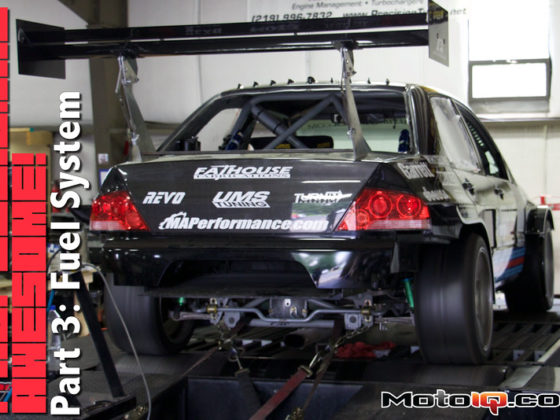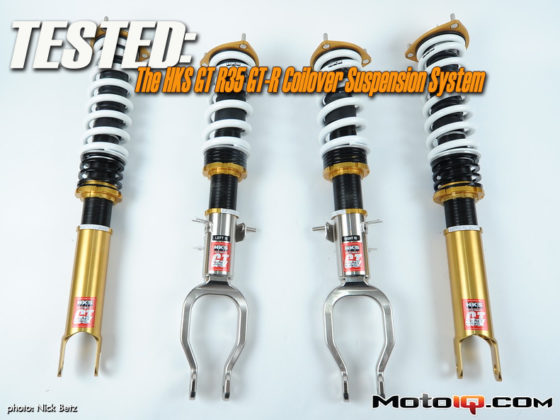,
When designing a turbine or compressor housing from scratch, Garrett engineers have a tall order to fill. They must balance the equally important requirements of high flow capacity, high aerodynamic efficiency, low weight, very tight clearances and tolerances to the wheel, dimensional stability at high temperature, and of course the capacity to contain bursts and other wheel failures. The ability of a particular housing to contain a burst is a function of the overall shape and the housing material properties such as material wall thickness, strength, elongation, and ductility.
Shape and wall thickness are most critical in the region called the containment band, which is the outermost wall of the housing that will see the brunt of the impact from wheel fragments during a burst. Since the wheel spins along a relatively constant axis, it is straightforward to predict the trajectory of the major pieces, which will be tangentially outward from the path on which the fragments were traveling the instant before the burst.
Newton’s First Law of Motion tells us that every object in motion will remain in that state of motion unless an external force is applied to it. In the case of a spinning turbine or compressor wheel, the inertia of every molecule tries to take a straight-line trajectory on an outward tangent from the wheel center. However, the internal bonds in the material provide the force necessary to keep the wheel together so it can spin around its center as a unit. When these bonds are broken and the material fails this centripetal force is no longer present and the pieces are free to take their preferred trajectory.
A fragment of the wheel will not continue to spin around the shaft axis after it has broken off; it will immediately take a straight path in the direction it was moving the instant before the burst. Hence, the housing’s containment band needs to be the fragments path to stop it.
For this reason, the containment band needs to be thicker than the other walls of the housing since it is the major line of defense for stopping fragments. It also needs to smoothly blend into the side walls of the gas passage (or volute) to minimize internal stresses. Garrett® engineers use extensive company history, experience, and guidelines to initially set the containment band thickness when a new housing is designed. Of course, it must be physically verified with actual containment tests, but the starting point is not just a wild guess.
 The turbine housing >containment band is visible in this cross-sectional view of a Garrett® GT55R.The containment band is the thickest section of the housing outside wall, radially outward from the wheel. If the wheel bursts, this thick wall needs to absorb the ballistic energy without failing in order to keep the wheel fragments contained within the housing.
The turbine housing >containment band is visible in this cross-sectional view of a Garrett® GT55R.The containment band is the thickest section of the housing outside wall, radially outward from the wheel. If the wheel bursts, this thick wall needs to absorb the ballistic energy without failing in order to keep the wheel fragments contained within the housing.The strength of a housing is of course partially determined by the shape and thickness, but material properties play a crucial role as well. Of course, a weak material should not be used; e.g. an aluminum turbine housing would stand no chance of containing an Inconel wheel burst unless the housing was made ridiculously thick. It is not enough for the housing material to simply be strong. It must also be ductile and able to absorb the ballistic energy of the wheel fragments without breaking. A strong but brittle material would simply shatter into many pieces upon impact and in this way, it would be equally as ineffective as a soft but weak material.
Correct housing material selection for containment takes into consideration the yield strength, ultimate tensile strength, and elongation percentage of the particular metal alloy at the temperatures they are expected to operate at. There are many different alloys of cast iron used in turbine housings that possess all of the right properties; ductile iron, high-silicon molybdenum iron, and “Ni-resist” ductile iron are three examples, in order of increasing temperature resistance. There are stainless steel alloys that provide even better high-temperature stability and strength than Ni-resist, but ductility can suffer.
Wall thickness must be altered to provide the extra absorptive capacity for burst containment to prevent the housing from catastrophically fracturing. High material cost becomes a significant issue with the higher grade stainless steel alloys as well, such as HK30 and other austenitic stainless steels. In many cases, stainless turbine housings become cost prohibitive for all but the truly serious racing teams, but if light weight and high-temperature resistance are paramount then they become very attractive. Caution must be exercised to be sure that a particular stainless housing will successfully contain a wheel burst.
Regardless of the ideal properties of the housing material, if quality control is not strict then the actual housings being produced will be compromised. Rigorous qualification and verification of the material chemical composition are needed to ensure consistency from housing to housing. Garrett® by Honeywell follows the OE automotive industry standard PPAP (production part approval process) inspection requirements to verify that mass production housings retain equivalent material quality and dimensional accuracy to the housings that were used for testing.
Garrett Burst & Containment Qualification and Testing
Every new Garrett aftermarket and original equipment turbocharger is qualified to contain compressor and turbine wheel bursts – that much should be clear. But how is this verified? When a new wheel is designed, testing of unmodified parts is conducted to determine the “natural” burst speed of the wheel. Turbochargers are built and instrumented with speed and temperature sensors and installed in a specially constructed containment stand that supplies hot compressed air to the turbine. The turbocharger is brought up to speed and temperature for a dwell period, and then intentionally and immediately sped up to well beyond the qualified speed limits. Turbo shaft speed is recorded and a successful test will empirically reveal the natural burst speed.
When a new Garrett housing is developed, it is qualified in conjunction with the specific compressor or turbine wheel that will be running inside of it. New combinations of existing wheels and housings are also qualified. If the housing in question is a compressor housing, the backplate is included as part of the qualified combination since it forms one wall of the diffuser (throat) and wheel fragments pass through this channel on their way to the containment shroud.
For completing a housing qualification, the first step is a detailed analysis of the wheel and housing to calculate the target burst speed, which set at a specific percentage of the wheel’s inherent natural burst speed. The burst energy at this speed is determined, and if the result is higher than previously qualified for the housing family, a physical test must be conducted.
Whether a compressor or turbine housing is being tested, the wheel is prepared in order to force a worst-case-scenario hub burst and do the most damage possible to the housing. The test is carried out in a dedicated burst test cell, and the turbocharger is again instrumented with speed and temperature sensors.
After a dwell period, the speed is ramped up and the burst is almost instantaneous. The turbo is allowed to cool down and then examined. A “verification shroud” made from thin aluminum sheet metal surrounds the housing during the test as a witness to the event. If this shroud is pierced in any way, the housing has failed the test and is not qualified. The housing will also fail if there is any separation from the turbocharger at the attachment joint, or if there are any holes or material missing from the containment band area.
If the housing burst containment test was successful, the turbocharger is still not necessarily qualified! Metallurgical analysis is required to verify material specifications after a successful test to show that the actual housing and compressor backplate (if applicable) that survived the burst were indeed made from the exact material alloys that were specified by engineering.
 Observing the energy released by burst testing is both awesome and scary. Once you see what happens, you will be glad to know that your turbo is burst certified! This is the burst containment test of a GTX3076R compressor housing. The turbocharger is barely visible behind the cloud of sparks; the object in the foreground is the turbine outlet pipe that collects the exhaust gasses. After the compressor wheel burst, the turbine wheel contacted the turbine housing, causing the sparks.
Observing the energy released by burst testing is both awesome and scary. Once you see what happens, you will be glad to know that your turbo is burst certified! This is the burst containment test of a GTX3076R compressor housing. The turbocharger is barely visible behind the cloud of sparks; the object in the foreground is the turbine outlet pipe that collects the exhaust gasses. After the compressor wheel burst, the turbine wheel contacted the turbine housing, causing the sparks.


